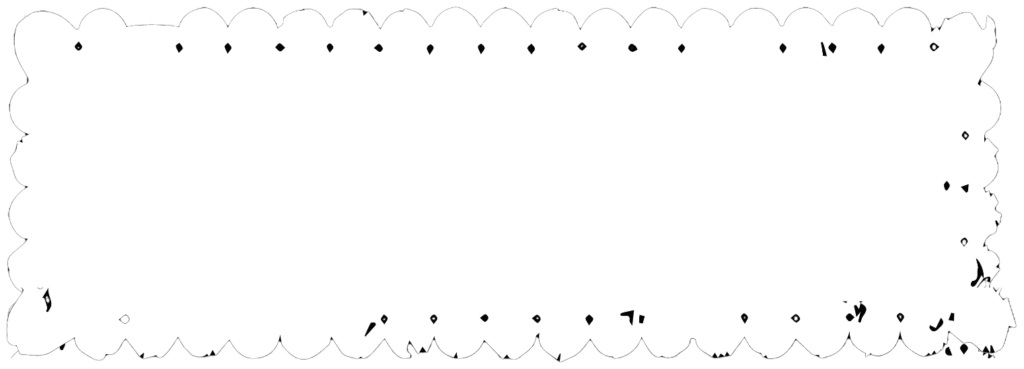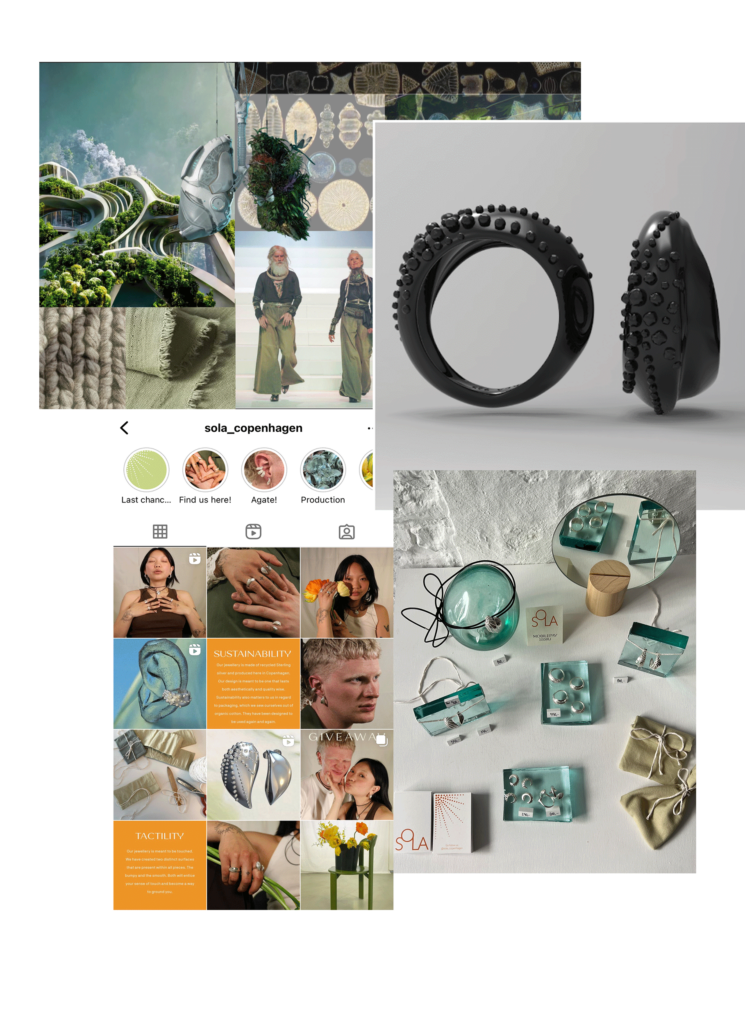
FOR THIS PROJECT WE HAD TO START A BUSINESS WITH A FOCUS ON SUSTAINABILITY AND ETHICS. IT INVOLVED RESEARCHING CONSUMER AND MARKET TRENDS, AND DEVELOPING BUSINESS MODELS AND PRICING STRATEGIES.THE PROJECT FOCUSED ON SCALING, PRODUCTION PLANNING, AND JEWELRY MANUFACTURING, EMPHASIZING THE
MANAGEMENT OF THE PRODUCT DEVELOPMENT PROCESS, INCLUDING LAUNCH, SALES,
AND CONTINUOUS RESOURCE-BASED EVALUATION.

This project was one of the most comprehensive undertakings of our entire educational journey. We were tasked with creating our own brand, encompassing all aspects of a real business, and actually attempting to sell like a legitimate enterprise. The process began with brainstorming for inspiration on what subject to focus on. We sensed a rising interest in “Solar Punk,” a movement advocating for a positive, green future. This led us to our emphasize phase, where we sought to validate our intuition.
We employed a DART model, which confirmed that the Solar Punk movement aligns with the current green and sustainable trends. It appears to be a reaction to years of environmental, social, and health-related challenges, including the COVID-19 pandemic. Our task also involved addressing the 17 Sustainable Development Goals (SDGs). We chose Goal 13 (Climate Action), Goal 3 (Good Health and Well-being), and Goal 14 (Life Below Water).
During our research into positive future scenarios, particularly in terms of climate, we encountered diatoms, often referred to as the jewels of the ocean. These microorganisms are responsible for producing between 20-50% of the Earth’s oxygen, meaning every second or third breath we take is thanks to them. Diatoms are considered the new green gold due to their incredibly sustainable properties. They are easy to farm and have the potential to become new protein substitutes for meat, sources of green energy, and much more. Their sustainability and promise greatly inspired us.
Subsequently, we conducted probe kits to gauge our target audience’s interest. From this, we developed our change hypothesis:
“With our jewelry collection, we aim to transform the prevailing discourse in our society from one of darkness about the Earth’s future to one of optimism, viewed through the lens of the Solar Punk ideology.”
Next, we entered the define phase. During this stage, we developed our Persona, Point of View (POV), and How Might We (HMW) statement:
Persona: Positive and thoughtful, Anellika, 28, needs a tactile and aesthetically sustainable piece of jewelry that helps her focus on her mental well-being while coming from a brand with a transparent sustainable profile. This is because she wants to see herself as a responsible consumer with a bright future in mind.
POV: How might we meet Anellika’s need for tactile and aesthetically sustainable jewelry that helps her focus on her mental well-being without compromising her sustainable consumption approach?
HMW: How might we address Anellika’s need for tactile and aesthetically sustainable jewelry that aids her mental well-being while maintaining her commitment to sustainable consumption?
This exercise helped us clarify our brand and product goals, ensuring their relevance to the user and defining our approach. From this, we derived the following design drivers for the aesthetics:
- Tactility
- Symmetry/Asymmetry
- Sculptural quality
- Aesthetic sustainability
- Diatoms
For our brand concept, we focused on:
- Zooming in
- Transparency
- Solarpunk
We then created a shared mood board and embarked on an extensive sketching process. Each team member produced numerous drawings, and we later met to review, dissect, and combine our ideas. During this phase, we also started sketching in Rhino, creating test prints, and gathering feedback from our target audience on our designs.
Simultaneously, we worked on pricing strategies. It was crucial to keep the price as low as possible due to our target market and to minimize financial risk. We closely monitored the weight of our jewelry and the materials used. We also began developing our brand book and its vision during this period.Here we also worked on a BMC.
Once we finalized our collection, we moved into mass production. We 3D printed our masters, refined them, created rubber molds, and produced a small inventory of our pieces.
We ultimately created a collection of six pieces of jewelry, each available in two variations: 925 Sterling Silver and gold-plated. During the design phase, we also developed our own packaging, which consisted of handmade fabric pouches that could be reused to protect the jewelry. Additionally, we produced business cards, posters, and social media branding materials. We had a photoshoot to ensure good quality content for our instagram. We primarily utilized Instagram as our main sales channel. Other than this we created a brand book to ensure a cohesive and recognizable brand identity. You can download the brandbook underneath this section.
To showcase our jewelry collection, we created displays for events and for the retail store where our pieces were featured. We held an event in collaboration with another group in Frederiksberg, exhibited in a store on Sølvgade for two weeks, and hosted an event at Auto Paul. We also sold our jewelry at school and, as mentioned, through Instagram.
Fortunately, we ended up with a profit in the end. This project was an incredible experience, encompassing all aspects of running a business, from branding and jewelry design to packaging and retail. It taught me a great deal about what it takes to run your own business and how to best structure a process like this.
